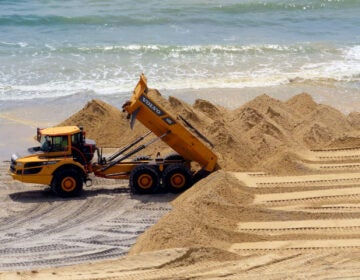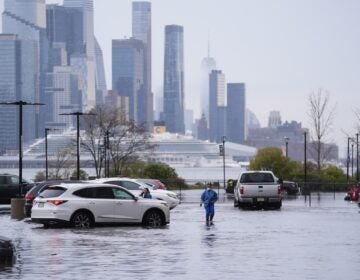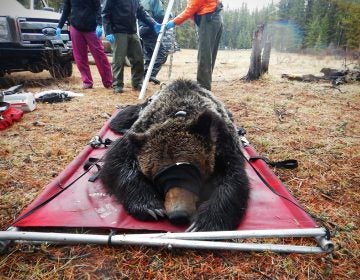Canada’s First Nations use tourism to protect natural resources
Communities along Canada’s western coast combine conservation and tourism to create jobs that line up with their cultural values.
Listen 7:45
Visitors watch a bear feasting on salmon. The Homalco Nation has invested in a wildlife viewing operation on its territory. (Irina Zhorov/WHYY)
About 30 years ago, the tiny community of Klemtu was in big trouble. A cannery had closed, and unemployment soared to more than 80 percent.
Klemtu lies off Canada’s western coast; the forests and waters in the region have for millennia provided food and supplies for the indigenous people, Canada’s First Nations. More recently, industries that pull resources out of the land, like commercial logging and fisheries thrived there. But priorities in the region have shifted in the past few decades. First Nations communities, as well as environmental groups, have pushed for more sustainable management and industries in this pristine corner of the world — now dubbed the Great Bear Rainforest.
The Kitasoo/Xai’xais, who live in Klemtu, developed a plan to diversify the economy and put people back to work. It included everything from small-scale forestry to ecotourism.
But tourism wasn’t an easy pitch. People wondered: Would tourists buy up all of the supplies in the community store and peer into windows? Despite those worries, the plan went forward.
The Kitasoo/Xai’xais worked to create an operation imbued with the nation’s values. They built a beautiful lodge on the water, which is booked a year out despite its hefty daily rates. Visitors explore mountain-hugged inlets and watch wildlife. Cultural programming dominates the evenings.
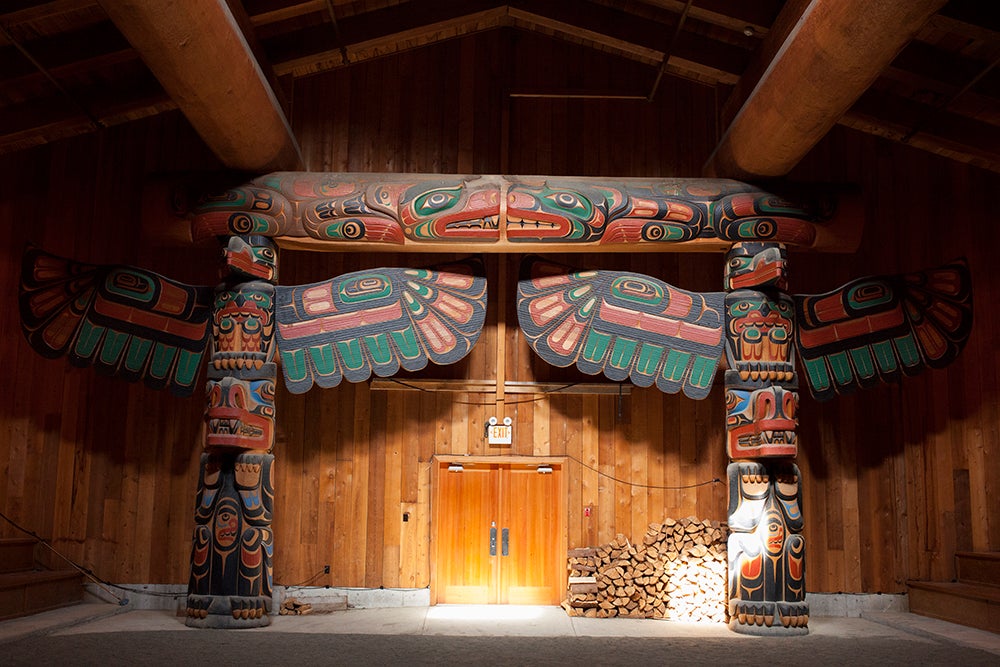
Today, tourism is the second-biggest industry in Klemtu, population 450.
“This is the future of our community, and this is going to be, I think, the future of the Great Bear Rainforest,” said Doug Neasloss, chief councilor of the Kitasoo/Xai’xais. The number of aboriginal tourism businesses in the province has grown 85 percent since 2006.
Growing
Forestry and fishing still support important jobs in the area. But a 2016 law limited logging. And First Nations have pushed for even more conservation.
Other tourism companies have followed their lead. Kevin Smith, who owns Maple Leaf Adventures, based on Canada’s central coast, says there’s a growing conservation economy in the area.
“Just cutting down forest for short-term gain and shipping it overseas as a commodity is not the highest and best use for this area,” Smith said.
Instead of exploiting the land, a growing number of tourism companies are exploiting the pristine views.
The Wilderness Tourism Association estimates that in 2012, the latest data available, visitors spent $1.5 billion at businesses offering nature tourism experiences.
Along with First Nations, the wider tourism lobby has used its economic power to pressure government to institute more protections. Tourism stakeholders have participated in land-use planning. They’ve written guidelines to prevent visitors from bothering the wildlife. And many companies supported the First Nations’ effort to stop the grizzly bear hunt. The province of British Columbia outlawed grizzly hunting late last year.
Bears
Bears are an important part of First Nations’ cultural identity and the namesake attraction of the Great Bear Rainforest. It’s home to grizzlies, black bears, and the rare, all-white spirit bears, born to black bears carrying a specific recessive gene. Working with wildlife has reconnected some communities to the territory, reviving cultural practices long suppressed by Canadian government policies, says former chief of the Homalco Nation, MaryAnn Enevoldsen.
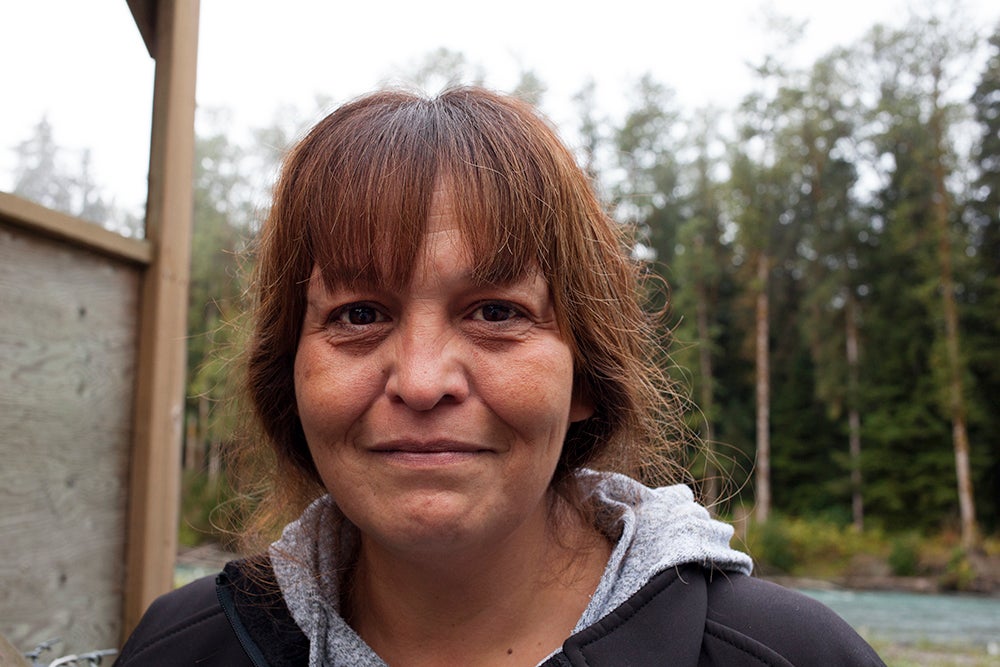
She says a friend recently brought her a bear’s paws. He harvested them when another bear killed the animal. She stashed the paws in a cooler with ice and gathered the community’s elders and kids.
At a potluck lunch, a few elders performed a blessing that no one had done in years. They rubbed the bear paws on the children’s hands, so they too would harvest berries just like a bear, and on their feet, so they could move quietly through the forest.
The elders were in tears.
“They said, ‘I can’t believe this is happening in our community again,’” said Enevoldsen.
At dawn on a fall day, Enevoldsen joined a group of visitors on her land along the central B.C. coast to search for bears. It didn’t take long to find them. At a viewing tower perched on the edge of a turquoise river, a bear walked along eating salmon.
Ecotourism now brings in about 12 times more visitor spending to the area than the bear hunt did. Like the popular (and expensive) Kitasoo/Xai’xais’ lodge, Enevoldsen says the Homalco’s bear tours are also booked a year in advance.
In tourism, she said, her nation has found a way to blend economic development and love for the land. They started the business, she said, because “I thought it would be a good way to protect home.”
—
This reporting was supported by the Institute for Journalism and Natural Resources.
WHYY is your source for fact-based, in-depth journalism and information. As a nonprofit organization, we rely on financial support from readers like you. Please give today.




